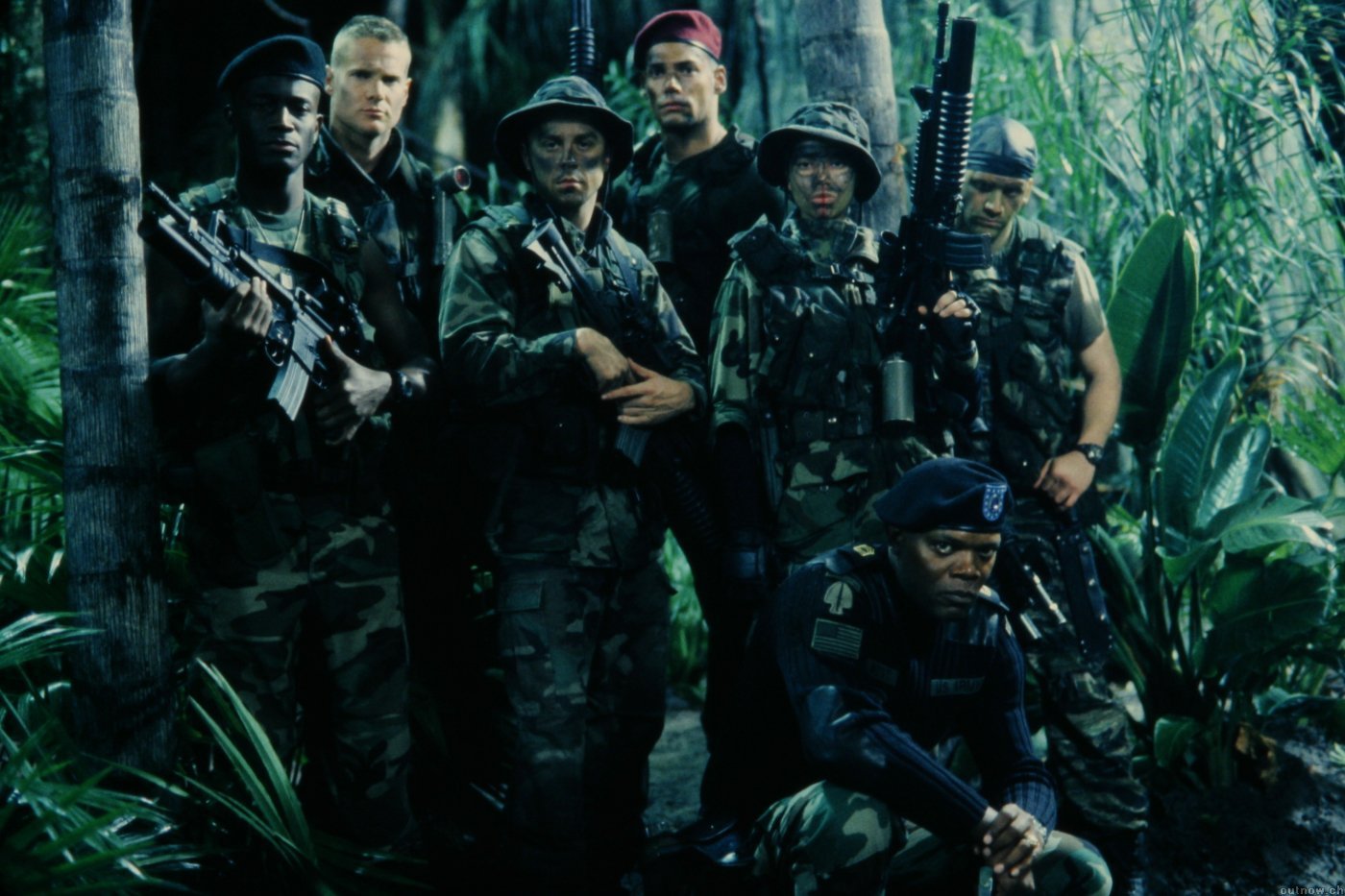20 Years Of Being Far From BASIC
20 years ago, audiences shrugged at a confusing-verging-on-impenetrable military-set murder mystery from THE HUNT FOR RED OCTOBER director John McTiernan. Not even the prospect of a reunion between Vincent Vega and Jules Winnfield was enough to save BASIC from a lackluster box office performance nor much of a following today. Most viewers consider BASIC to be a standard-issue forgettable Popcorn Classic, something to be picked up and discarded from a discount bin of $3 discs at a Target or Big Lots. But I’ve watched this movie three times now and I’m telling you: there is something about it and not all of it is coming out of my fevered imagination.
If you happen to have a conversation with the rare individual who has both seen and remembers BASIC, the thing they’re most likely to bring up is its confusing narrative, a blend of RASHOMON, A FEW GOOD MEN and the late ‘90s/early 2000s Hollywood twist-o-ramas like THE USUAL SUSPECTS or IDENTITY. Every time I watch this movie, I feel I am further away from determining what actually happened out there in the stormy Panama jungle during what was supposed to be a routine Army Rangers exercise, but I am also further convinced that this is what McTiernan intends. Its multiple nested flashback structure is typical of murder mysteries in some ways but differs in one crucial aspect from the genre in that we never learn precisely what the “true” sequence of events actually was, a quality the film shares with RASHOMON (a film which, I’d like to add, does not have Harry Connick Jr. getting clocked in the face with a phone book).
The exercise in BASIC is a simple exploration of the nature of truth: in the film’s view, slippery and unreachable even under the best of circumstances. But McTiernan’s visual execution of the story couldn’t be clearer. He’s got plenty of classics to his name, but I would argue this is his most impressive work on a purely visual level; you can sense him striving in every scene to keep the film from becoming a talky mess with flashy close-ups and his trademark focus pulls. Despite its reputation, this movie is just plain watchable in the most compulsive sense. Sara Freeman’s excellent Mubi essay on BASIC articulates the film’s visual strategies more effectively than I can, and even includes a great quote from McTiernan on the audio commentary:
The camera isn't just moving for the sake of keeping it moving. The camera is an active narrator in a thriller. The camera has to tell you how to evaluate every piece information you get and put it into context.
At the center of all these plots and counterplots is Connie Nielsen’s Julia Osborne, charged with investigating the death of an Army Ranger drill sergeant (Samuel L. Jackson) with John Travolta’s DEA interrogator Tom Hardy (yes, his name is Tom Hardy, although that was probably intended as an allusion to The Hardy Boys mysteries rather than the actor). Nielsen is part of a long line of McTiernan protagonists whose primary job is to outthink the bad guys, and she holds her own with the copious flashbacks and Travolta’s skilled hamming.
My favorite sequence in the movie comes late, after the case has been ostensibly solved, and Nielsen stalks who she believes might be the true culprit. Her determined closeups set in part to a version of “Black Betty” are as pure as cinema can get. Which brings us to the ending of BASIC. You might have noticed that I have given this movie only the most cursory of plot summaries. That’s partially because I don’t know what the hell happens in this movie, but also because it purposefully obscures its own narrative not just in its RASHOMON conflicting flashback structure but also its ending—one last pull of the rug that introduces its own new storyline pretty much out of nowhere. I’ll keep the specifics out, not that they’d mean anything to you if you haven’t seen the movie anyway, but it’s one of the more ridiculous, convoluted, and farfetched of the Hollywood twist ending trend.
Most who watch BASIC tend to dismiss it as formulaic trash, but I (and a few others) represent a different truth, which is that it’s one of the most formally audacious and recklessly entertaining movies John McTiernan ever made. Who’s to say who’s telling the truth?




